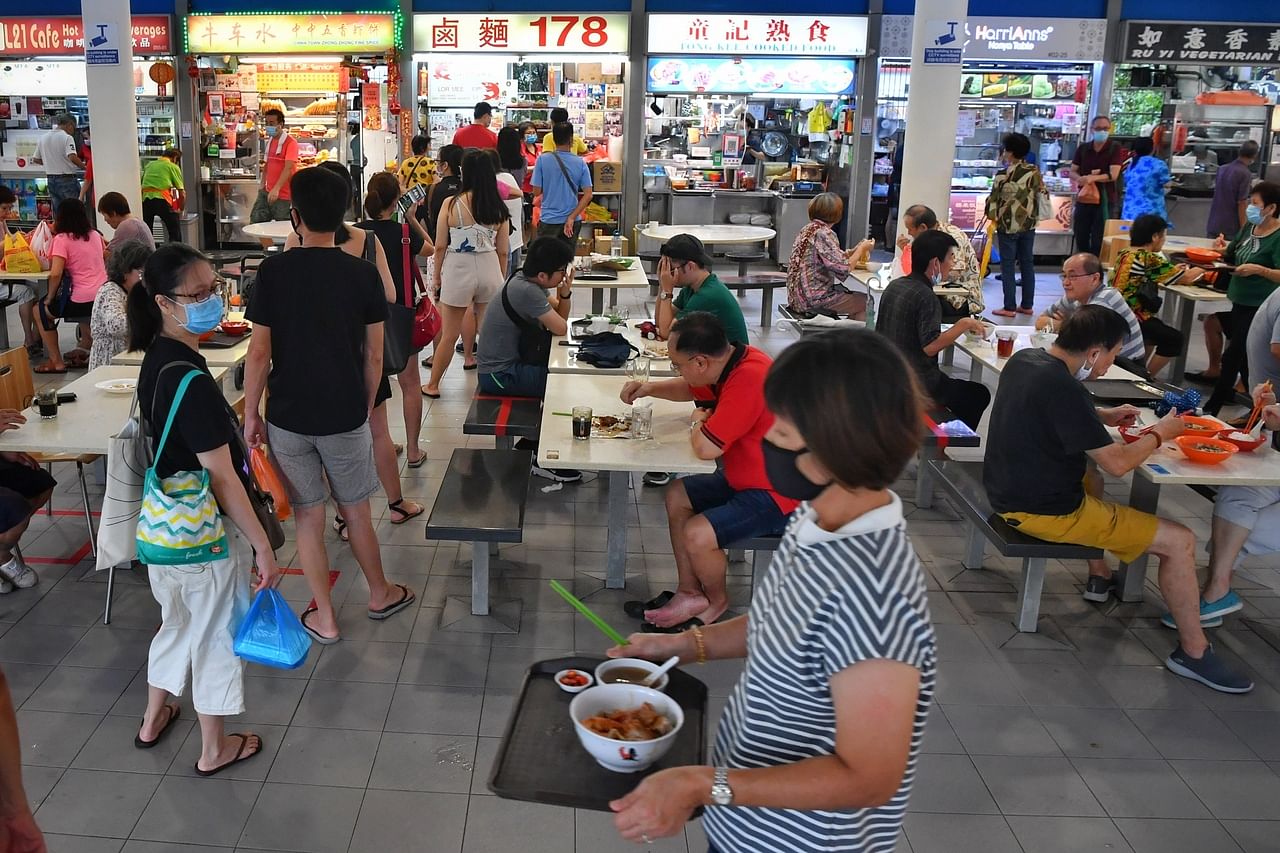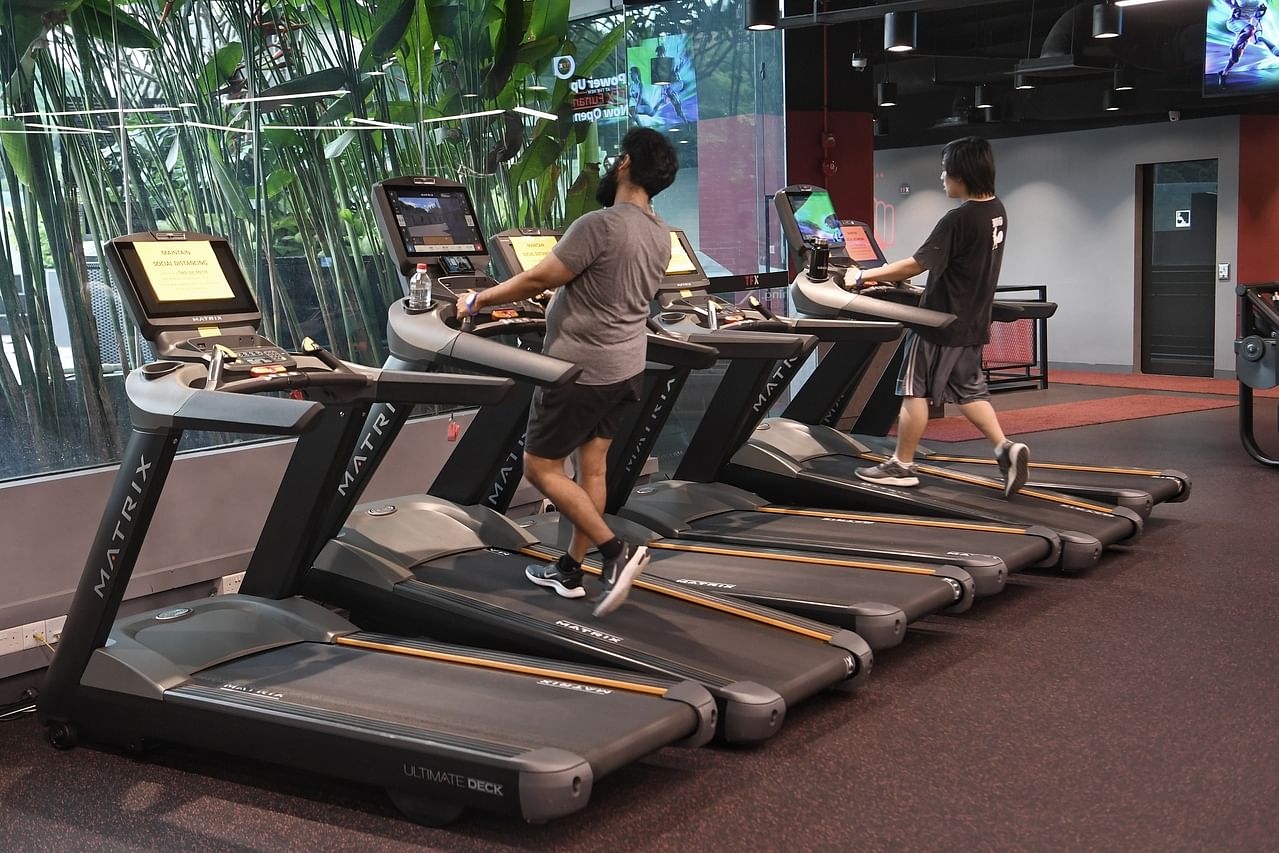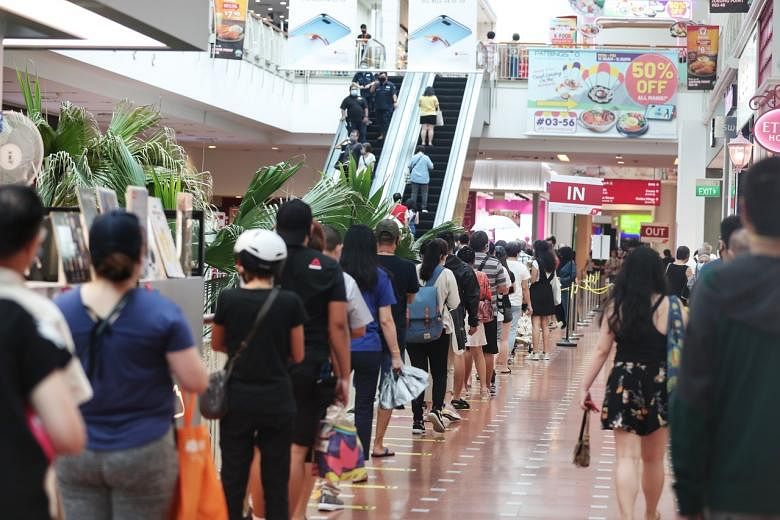As Singapore embraces phase two of its reopening, people have been venturing out and catching up with friends and relatives. But with the virus still lurking in the community, the chances of being infected remain. Here's a look at why crowds, close contact and enclosed spaces, among other factors, intensify the risk.
Factors which heighten risk
1. ENCLOSED SPACES
Risks are heightened in enclosed spaces where ventilation is poor. The virus also favours the cooler temperatures of air-conditioning.
2. CLOSE CONTACT SETTINGS WITH CLOSE-RANGE COMMUNICATION
The virus can be passed through small droplets during speech.
3. CROWDED SPACES
The more people, the higher the risk. Places where people congregate also tend to get dirtier.
4. DURATION AND DIVERSITY OF CONTACTS
The amount of time spent together matters. Equally important is the different groups that people meet and their respective contacts.
The probability of virus transmission is heightened when all these factors overlap, such as in the following scenarios:
Social gatherings
Gatherings at home - such as birthday parties, meet-ups and study groups - that involve people from many different households in an enclosed setting are risky. People may let their guard down, chat at length and in close proximity, and are unlikely to wear masks. Meals may be eaten together without separate serving spoons. Such events behind closed doors are also difficult to regulate.
The risks are exacerbated if the people in each group come from different households. For instance, if you invite five relatives from different families for tea, and another five old school friends for a catch-up, and it turns out that you are infected, you have put 10 other households at risk. This number can multiply to 30 households two transmission cycles later.
There is a real risk of a superspreader event where one person infects a large number of others. Try to limit time spent with others to the same groups of people, rather than a wide circle. Continue to use networking apps to socialise with friends or vulnerable older family members.
Hawker centres and coffee shops

With a cap of five people who can sit together at a single table, people may end up shouting out to others at adjacent tables. This can cause droplets to fly farther, particularly if they have taken their masks off to eat or drink. It is still safer to buy takeaway.
Where people unwind and chill
Places with outdoor refreshment areas, such as Holland Village, Boat Quay and Robertson Quay, where people tend to gather and relax over food and alcohol and converse with one another, often without masks, are risky areas.
Crowds and alcohol can be a volatile mix. On June 19, the first day of phase two, crowds gathered and three men were arrested after a fight broke out in Lorong Mambong in Holland Village. A restaurant was shut down because it failed to ensure safe management practices. Three people have since been arrested.
Indoor gyms; contact sports

The lack of masks and possible close contact with other people who are breathing hard and exerting themselves in an enclosed environment for extended periods increase the likelihood of virus transmission.
Source: ASSOCIATE PROFESSOR ALEX COOK, VICE-DEAN OF RESEARCH AT THE NATIONAL UNIVERSITY OF SINGAPORE'S SAW SWEE HOCK SCHOOL OF PUBLIC HEALTH


